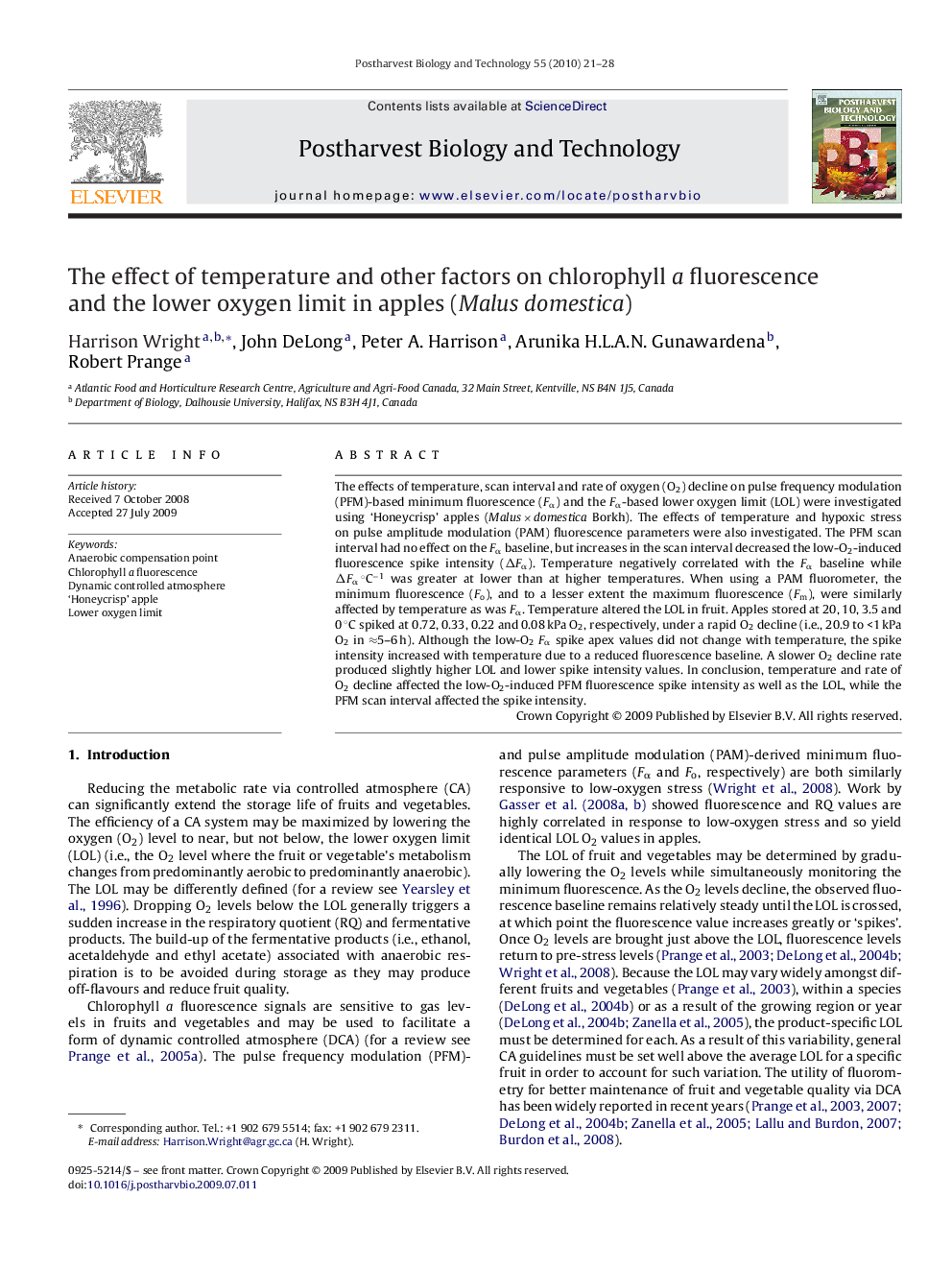| Article ID | Journal | Published Year | Pages | File Type |
|---|---|---|---|---|
| 4518976 | Postharvest Biology and Technology | 2010 | 8 Pages |
The effects of temperature, scan interval and rate of oxygen (O2) decline on pulse frequency modulation (PFM)-based minimum fluorescence (Fα) and the Fα-based lower oxygen limit (LOL) were investigated using ‘Honeycrisp’ apples (Malus × domestica Borkh). The effects of temperature and hypoxic stress on pulse amplitude modulation (PAM) fluorescence parameters were also investigated. The PFM scan interval had no effect on the Fα baseline, but increases in the scan interval decreased the low-O2-induced fluorescence spike intensity (ΔFα). Temperature negatively correlated with the Fα baseline while ΔFα °C−1 was greater at lower than at higher temperatures. When using a PAM fluorometer, the minimum fluorescence (Fo), and to a lesser extent the maximum fluorescence (Fm), were similarly affected by temperature as was Fα. Temperature altered the LOL in fruit. Apples stored at 20, 10, 3.5 and 0 °C spiked at 0.72, 0.33, 0.22 and 0.08 kPa O2, respectively, under a rapid O2 decline (i.e., 20.9 to <1 kPa O2 in ≈5–6 h). Although the low-O2Fα spike apex values did not change with temperature, the spike intensity increased with temperature due to a reduced fluorescence baseline. A slower O2 decline rate produced slightly higher LOL and lower spike intensity values. In conclusion, temperature and rate of O2 decline affected the low-O2-induced PFM fluorescence spike intensity as well as the LOL, while the PFM scan interval affected the spike intensity.
